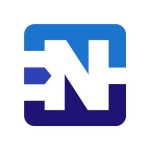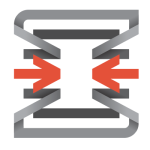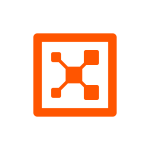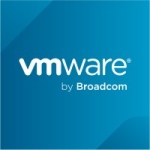We install the solution for our customers and Check Point is our preferred solution in any firewall deployment. The two-layer architecture with the administration and security makes a difference and in every instance, we know who the user is.
The touch features are very different than other brands. From the feedback I get from my customers, Check Point is the best.
Check Point gives us a strong solution that we can depend on when deploying it for clients.
The most valuable features are within the unique architecture that creates flexibility in the deployment.
The knowledge base that is available is limited and it is on a closed network where only a customer or certified engineer will know about it. A beginner who wants to learn about the product actually has to enroll in training or get certified and have a valid license or certification to access information. That is something I find strange as most users would like to know about it. The new users would like to be able to see those areas and what type of concerns or any configuration issues they may have before deciding to work with the product. To me, that is a simple open-mindedness. In terms of the availability of the system and functionality of the product, there's no concern. But the problem is that efficient VSX (Virtual System Extension) deployment is complicated. Most of our customers are afraid to deploy any configuration changes because they are afraid something will happen.
It's not the same situation as with other products. I guess the reason behind it is the kind of architecture which they are using. There are more possibilities to crash than other products. That is the feedback I normally get from end-users, but even so, for us, I would say it's one of the best product.
We've been using this product for over two years.
Check Point is very stable. I would say that initially there were a couple of issues we had during deployments. But now we have climbed the learning curve of the product and all installations are very stable. We have most clients running on version 7.3 and didn't upgrade most further from there because we know that 7.3 is stable and it is what we are running most of the customers now.
Scalability is fine. In fact, we are demonstrating the hyper scale with most of the customer now. There is no doubt about the scalability and it is not a problem.
Up until now, we have not had to register with technical support from Check Point. If we needed help we got support with the presale technical support team from our region. He was able to help us internally. The team helps us to get products stable. Up until now, we did not contact them. It is not very transparent. They approach resolutions through a partner and the partner solves the case. They seem to mostly depend on partners for the resolution of issues.
We deploy a variety of products for our clients depending on their needs. Check Point is one of the most reliable.
I would say that the installation is straightforward when you have learned about the architecture. Before that, the installations may be a little confusing.
We are partners with Check Point so we handle the installations and deployment. In the beginning, we did have some engineers from Check Point assist us in the initial installations, but after that it was fine and we were able to manage it by ourselves.
Check Point pricing is high. It is a sector where there is heavy competition so it does not help when trying to sell the product. But one thing is that the sales chain is fantastic. The price is usually the most difficult thing when we discuss Check Point with customers, their feedback is that it is not a competitively inexpensive product. Clients want to know why that is and if we could scale the price. Check Point can have more presence in the market, but if they want it to compete, they have to come down in price a little more. I would say 20 to 30% lower. The product is fine.
The web application firewall is commonly used in most firewalls now. If they can add that as a feature, it would be a very strong scenario. When we use Check Point on a perimeter or a DMZ zone, the first thing that clients ask is if there is wireless protection. Check Point has IPS (Intrusion Prevention System) but it does not have wireless protection. So if production is using the cloud if they can integrate mobile app protection, mobile shielding, there's more value for Check Point, but if they include that, Check Point could be the very best firewall option.
On a scale from one to ten, when one is the worst and ten is the best, I would rate Check Point as an eight. It needs to do better in pricing and with broader features for mobile.
One thing that I learned from multiple installations of Check Point is that you have to train the customer before implementing. Unless the customer is already a highly skilled security engineer so that they know what they can get out of the product, they will not be as satisfied. Otherwise, just before the deployment, we have them go for training so they understand the product and what it can do.
They will be happier and they won't choose to go with another product in the future. Even with my engineers who understand many other products, I trained them properly before I send them out for deployments. Check Point is not a product that if you don't know you can just install without knowing anything about it. You have to know the architecture first. You have to know each and every option than work on the product. Then it will be far better and say no to certain features which are not important to use. On the other hand, knowing it is available is fantastic and becomes an option in the right situations.
















Auto-Scale Palo Alto Networks VM-Series Firewalls in a Public Cloud Environment
For environments that require an automatic deployment as scale out of the security services is required, you can
combine bootstrapping with additional automation that monitors the security services and, when performance limits
are reached, triggers (CloudWatch) the automatic deployment and bootstrap of a new firewall to the security layer.
Auto-scaling works differently in every environment because tools that are specific to each public cloud environment
monitor and trigger the firewall deployment. Auto-scaling in AWS uses AWS services such as Lambda, Amazon Cloud-
Watch, S3, and SNS, in addition to the APIs and bootstrapping on the firewalls. In Azure, you use AppInsights and
Virtual Machine Scale Sets to monitor the environment and trigger the automatic deployment of a new firewall. You
can use a number of metrics in order to trigger the auto-scale event. Examples include:
• Data Plane CPU Utilization %
• GP Gateway Utilization %
• Active Sessions
• Data Plane Packet Buffer Utilization %
• SSL Proxy Session Utilization %
• Session Utilization %
Just like in the previous example, you must create the bootstrap container before automatic scale-out. The automation
monitors the appropriate metric on the existing firewalls, and after the value is higher than allowed for the right amount
of time, the scale-out event triggers the same firewall deployment as in the previous example. After the firewall is deployed and has a configuration provided by Panorama, the auto-scale automation adds the new firewall to the backend pool of the load balancer, ensuring that traffic load is appropriately distributed to the new firewall.
Operational Response to a Changing Environment
In virtual private data center and public cloud environments where new compute instances are created as needed for
scale, the administrative overhead in managing security policy can be cumbersome. Using dynamic address groups in
security policy allows for agility and prevents disruption in services or gaps in protection.
The VM-Monitoring Agent on the firewall can pull IP address and tag information from the cloud environment. Predefined dynamic address groups use the tag information to automatically associate IP addresses to pre-defined rules in the security policy. When there are multiple firewalls in the environment, they all can monitor the same source for IP and tag information. This provides the firewalls a dynamic but consistent view of the resources within the environment.
Dynamic address groups allow the firewall security policy to respond to a changing environment, but the applications
running in the environment must be well known for the appropriate dynamic address groups and security policy rules
to be created. Configuration automation can be used to provide a security policy that automatically is configured when
new applications are deployed to the environment.
Security Response Based on Log Information
Although log information alone can be extremely valuable to a security administrator, manually sifting through the logs
and responding to security events takes too long and requires too many administrative resources. Automated security
actions in the firewall can respond when a previously identified scenario presents itself in the logs. For example, when
Panorama sees a correlation event, it can use the source IP address from the log and use auto-tagging to attach a predefined tag, such as “Compromised.”
You can configure a dynamic address group on the firewall that is associated to the IP addresses with the “Compromised” tag. You can then create a security policy that blocks the traffic or enforces multi-factor authentication (MFA) for these endpoints that uses the dynamic address group as the source. If the user on the endpoint is malicious, MFA blocks their attempt to move laterally within the network, protecting sensitive data.
If the user continues to attempt to move laterally, Panorama can automatically use additional tags to block the IP and
HTTP log forwarding to log an incident. Panorama can use the ServiceNow ticketing system HTTP API to create a ticket so that the operations team is aware of this action on the endpoint. They can then investigate the incident, remediate the endpoint if needed, and remove the associated tags the apply the enhanced security policy.
Security Response to Improper Cloud Environment Configuration
RedLock cloud security provides organizations configuration security alerting for AWS, Azure, and GCP environments
and provides integrations that allow remediation to be automated. Using auto-remediation, organizations can make
sure alerts are automatically remediated before they, or malicious actors, even know there’s an issue. For example,
reconfiguring a security group rule that allows ingress traffic from the public Internet and opening a ticket with Service-
Now for tracking minutes after it’s been created.
RedLock uses the following automation process to remediate issues:
1. Using the cloud environment’s API, continuously perform checks against the configured signatures and policies.
2. If the resulting analysis determines a signature did not pass, send the failed alert to an integration such as
ServiceNow or AWS Simple Notification Service (SNS).
3. The AWS SNS service triggers the workflow automation and launches the AWS Lambda auto-remediation
function.
4. Using the AWS API, auto-remediate and fix the offending issue.
5. Send the resulting logs to AWS CloudWatch.